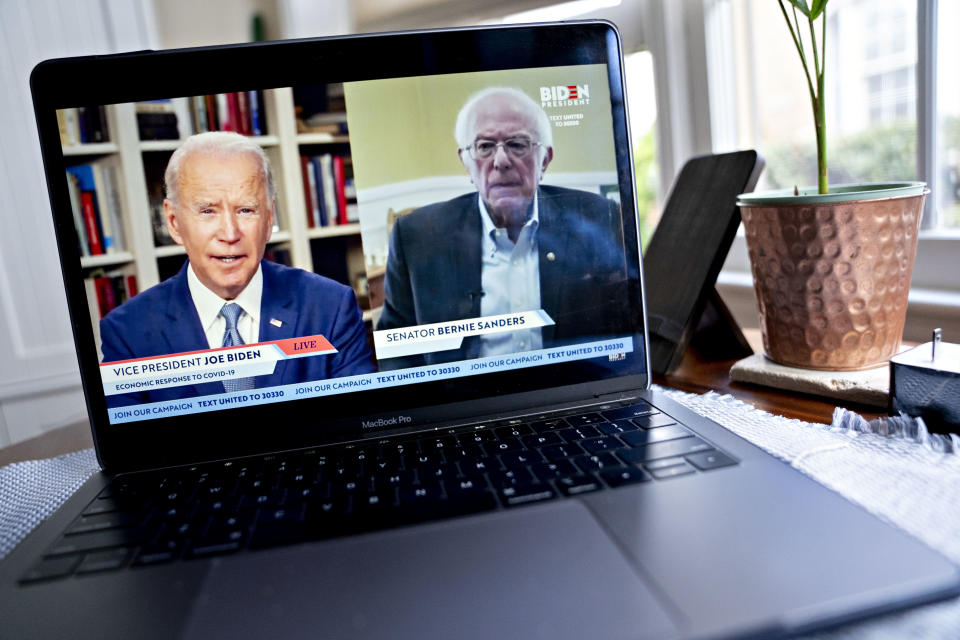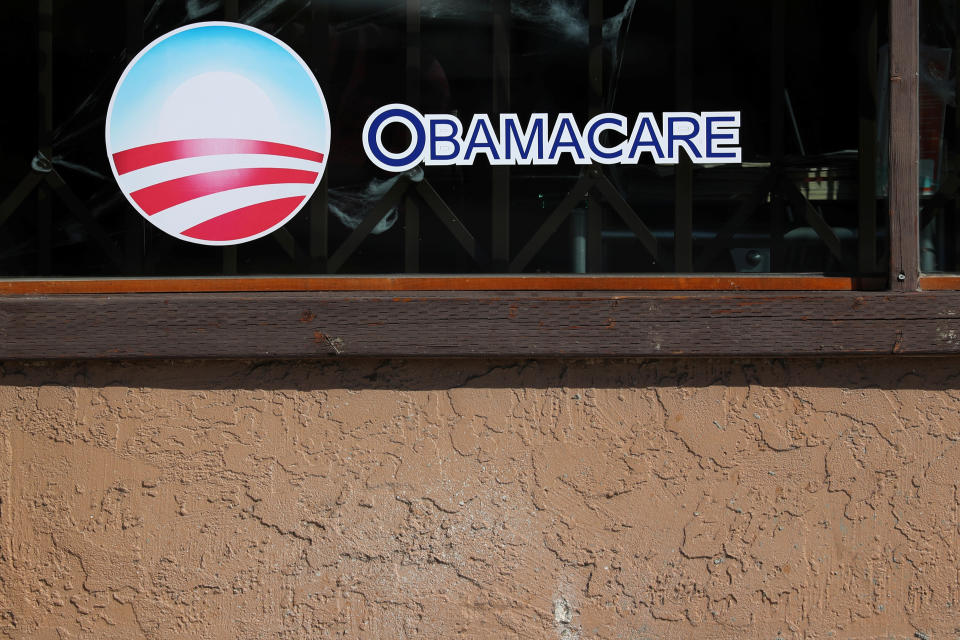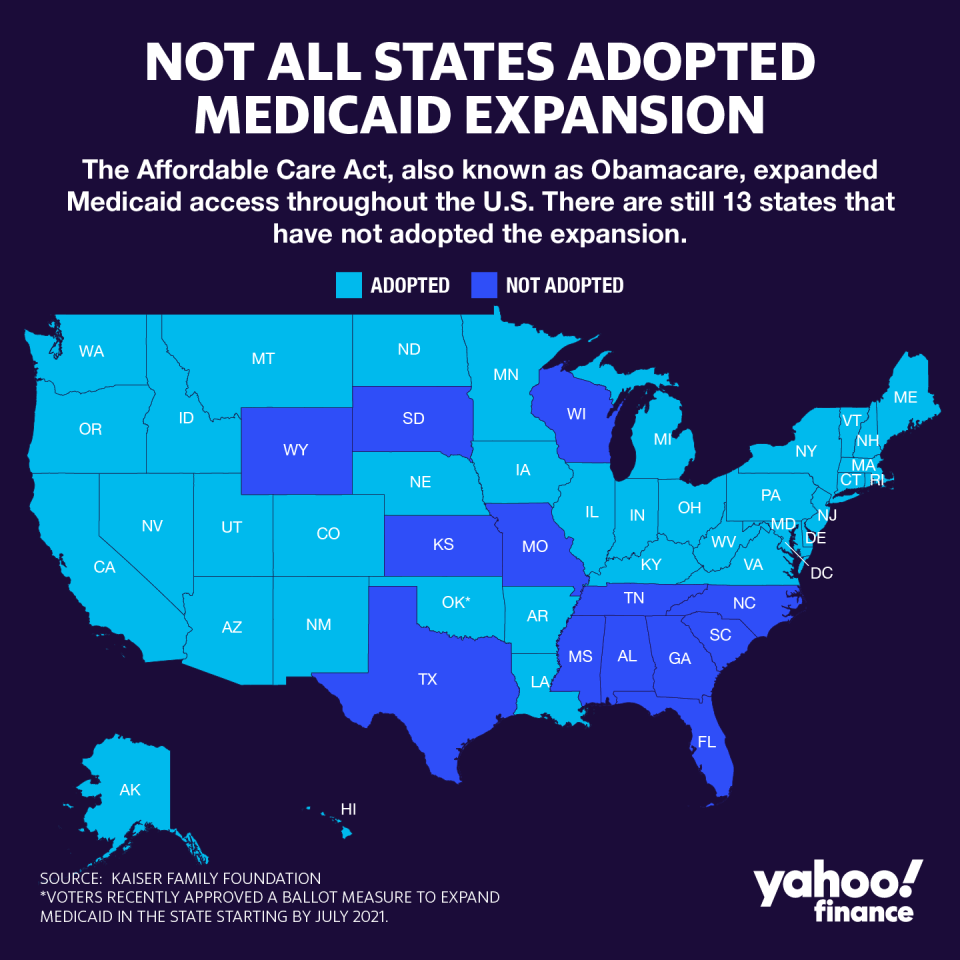How Biden's public health care option should work, according to the Biden-Sanders task force
Throughout his campaign, presidential candidate Joe Biden has made it clear that his health care plan is not Medicare for all.
Instead, he plans on building upon the Affordable Care Act (ACA) to create a public option while keeping private insurance for those who want it. His campaign created a joint task force with allies and supporters of Sen. Bernie Sanders, his former opponent in the Democratic primaries.
The task force released its recommendations in a 110-page letter on Wednesday, including a section on how to create a public option.
“Private insurers need real competition to ensure they have incentive to provide affordable, quality coverage to every American,” the task force stated. “To achieve that objective, we will give all Americans the choice to select a high-quality, affordable public option through the Affordable Care Act marketplace.”
The document stated that Biden’s public option should offer at least one plan without deductibles that’s administered by Medicare and cover all primary care without co-pays. It should also negotiate with doctors and hospitals for costs for other treatments, much like Medicare.
“In the midst of the COVID-19 pandemic and President Trump’s recession, Democrats will take action to expand coverage to those who need it, including the newly unemployed and the long uninsured,” the plan said. “When the public option becomes law, it will be available on the Affordable Care Act marketplace for all Americans to choose.”

‘A distinct proposal’
According to Marc Goldwein, senior policy director at the Committee for a Responsible Federal Budget (CRFB), these policy recommendations are fairly consistent with a CRFB analysis from January 2020, which found that it would cost an estimated $2.25 trillion over 10 years.
The analysis also found that Biden’s health care plan would “reduce costs by $450 billion” and “raise $1 trillion through direct and additional offsets,” while adding $800 billion to deficits over 10 years.
“It’s possible having the public option with no deductible at all will push up costs some relative to our score, but that really depends on the payments rates and the co-pay scheme,” Goldwein told Yahoo Finance.

A key component of these newly unveiled recommendations focuses on Medicare. For older workers, they wouldn’t have to wait until they’re 65 to enroll in Medicare, which is current law. Under these proposals, once they reach 60, they will have the choice of Medicare, the public option, or staying in their employer-sponsored plans.
Karen Pollitz, a senior fellow at the Kaiser Family Foundation (KFF), said that lowering the age of Medicare eligibility is a “distinct proposal,” noting that these recommendations at large “could give low-income workers access to more affordable coverage options than they may be offered at work.”
While these proposals would expand coverage, Goldwein said the fiscal effects of this will depend on the details.
“But it will cost somewhere between $0 and $200 billion over a decade,” he said, estimating that it would be “less than $100 billion and possibly even less than $10 billion” if it’s envisioned as a buy-in.

Addressing Medicaid and racial gaps
The ACA expanded Medicaid substantially, but the Supreme Court ruled that the expansion decision should be left up to individual states.
As a result, there are currently 13 states that still have not expanded Medicaid, although Oklahoma residents, despite being overwhelmingly Republican-leaning, recently voted for an expansion in the most recent election. KFF estimates that this leaves up to 4.8 million eligible people uninsured.
Those who are ineligible for Medicaid would be automatically enrolled in the public option for free and can opt out at any time through the task force’s policy recommendations.

“Everyone will be eligible to choose the public option or another Affordable Care Act marketplace plan, even those who currently get insurance through their employers,” the task force letter stated, “because Democrats believe working people shouldn’t be locked in to expensive or insufficient health care plans when better options are available.”
The task force also noted the current racial gap in insurance rates and stated that its plan would expand funding for ACA outreach and enrollment programs to try to close the gap.
“We also know that finally covering every American through the public and private insurance systems alone is not enough to guarantee universal access,” the task force said.
As a result, the plan would increase investments in community health centers and rural health clinics to provide support for mental health care, dental care, and substance use services like medication-assisted treatment, and address the provider shortage in each of those areas.
Adriana is a reporter and editor covering politics and health care policy for Yahoo Finance. Follow her on Twitter @adrianambells.
READ MORE:
Coronavirus: Health care experts call for nationwide special enrollment period
A 'flaw' in Obamacare is costing some Americans thousands of dollars per year
President Trump doubles down on dismantling Obamacare amid coronavirus pandemic
Read the latest financial and business news from Yahoo Finance
Follow Yahoo Finance on Twitter, Facebook, Instagram, Flipboard, SmartNews, LinkedIn, YouTube, and reddit.



